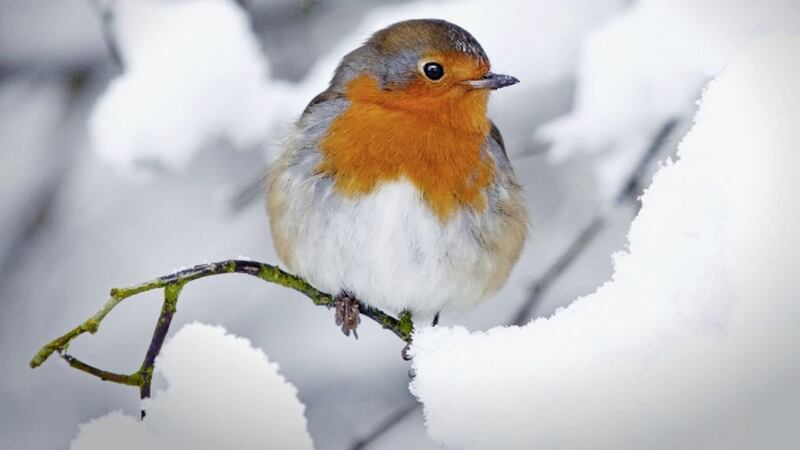AS WE enter December or decem, Latin for 10, originally the tenth month of the Roman calendar, our thoughts inevitably turn to Christmas.
As with many religious festivals, elements of the natural world are woven into the celebrations. Our much loved robin (Erithacus rubecula) is a bird historically associated with the birth of Jesus and adorns many cards featuring winter scenes as well as frequently forming part of the Christmas decorations.
There are many reasons for its close ties with the festive season. The robin is one of the few birds to sing right through the darkest days of winter and can be heard releasing its plaintive notes from leafless boughs when most other birdsong is absent, something 18th century poet William Cowper catches perfectly when writing of a robin he encountered on a winter’s walk:
No noise is here, or none that hinders thought.
The redbreast warbles still, but is content
With slender notes, and more than half suppressed
It is, however, stories linking the robin with Christ and of exploits with saints which best explains its Christmas ties. Legend says the robin acquired its red breast through splashes of blood from Jesus while on the cross as it tried to stem the blood flow caused by the crown of thorns. Another version attributes the red breast to the blood from Christ’s side as the robin tried to staunch the wound made by the legionary’s lance.
Tales also say the robin kept the fire alight for the baby Jesus in the stable, by flapping its wings to keep air circulating. In counties Kerry and Clare it has the Irish name ‘spideog Mhuire’ – Mary’s robin – because it came to Mary’s aid while fleeing to Egypt to escape Herod. As Mary ran she was cut by thorns and brambles, causing her to bleed, but the robin followed, covering all the blood with leaves and debris, to leave no trace.
A 12th century story recounts Scottish saint St Kentigern’s links with the robin. As a boy, the saint was disliked at school by his peers because he was loved by their teacher Serf, who had a robin, which he fed daily. One day when Serf was out, the other boys decided they would indulge in play with the robin and as they handled it roughly and tried to snatch it from each other, the bird died in their hands.
They blamed Kentigern, who was not involved in the mischief. When Kentigern heard this, he took the dead robin in his hands and making the sign of the cross over it, said: ‘O Lord Jesus, give back to this little bird the breath of life’. Immediately the robin was restored to life and flew to meet his friend Serf.
Interestingly, much of our knowledge about the behaviour and habits of this universally popular bird is due to the pioneering work carried out by a Co Fermanagh-based civil engineer, James Parsons Burkitt.
Born in Killybegs, Co Donegal, Burkitt was also an experienced field ornithologist who designed and conducted the first population study of a bird, the robin, based on ringing individuals in his garden near Enniskillen in the early 1920s. His work was to prove highly significant as it enabled individual birds to be identified in the field and details of their territorial behaviour, song and threat display recorded.
He proved the longevity of one female robin which he had ringed on December 18 1927 and which he trapped again on July 14 1938 – making it at least 11 years old – "the oldest living robin in the world’’ at the time.




